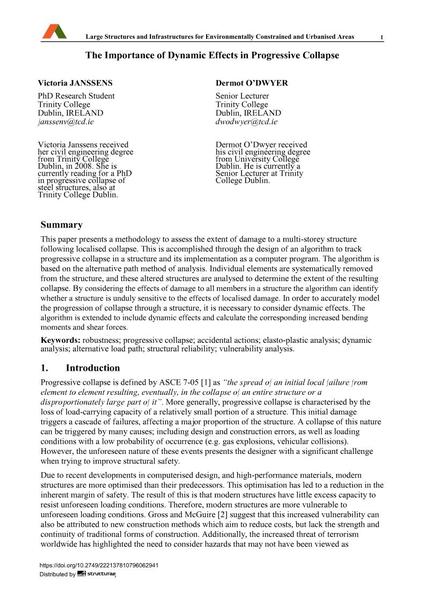The Importance of Dynamic Effects in Progressive Collapse

|
|
|||||||||||
Bibliographic Details
| Author(s): |
Victoria Janssens
Dermot O'Dwyer |
||||
|---|---|---|---|---|---|
| Medium: | conference paper | ||||
| Language(s): | English | ||||
| Conference: | IABSE Symposium: Large Structures and Infrastructures for Environmentally Constrained and Urbanised Areas, Venice, Italy, 22-24 September 2010 | ||||
| Published in: | IABSE Symposium Venice 2010 | ||||
|
|||||
| Page(s): | 604-605 | ||||
| Total no. of pages: | 8 | ||||
| Year: | 2010 | ||||
| DOI: | 10.2749/222137810796062941 | ||||
| Abstract: |
This paper presents a methodology to assess the extent of damage to a multi-storey structure following localised collapse. This is accomplished through the design of an algorithm to track progressive collapse in a structure and its implementation as a computer program. The algorithm is based on the alternative path method of analysis. Individual elements are systematically removed from the structure, and these altered structures are analysed to determine the extent of the resulting collapse. By considering the effects of damage to all members in a structure the algorithm can identify whether a structure is unduly sensitive to the effects of localised damage. In order to accurately model the progression of collapse through a structure, it is necessary to consider dynamic effects. The algorithm is extended to include dynamic effects and calculate the corresponding increased bending moments and shear forces. |
||||
| Keywords: |
robustness progressive collapse alternative load path structural reliability dynamic analysis accidental actions elasto-plastic analysis vulnerability analysis
|
||||
